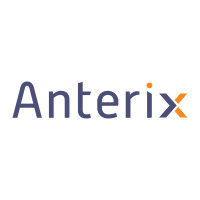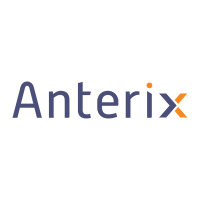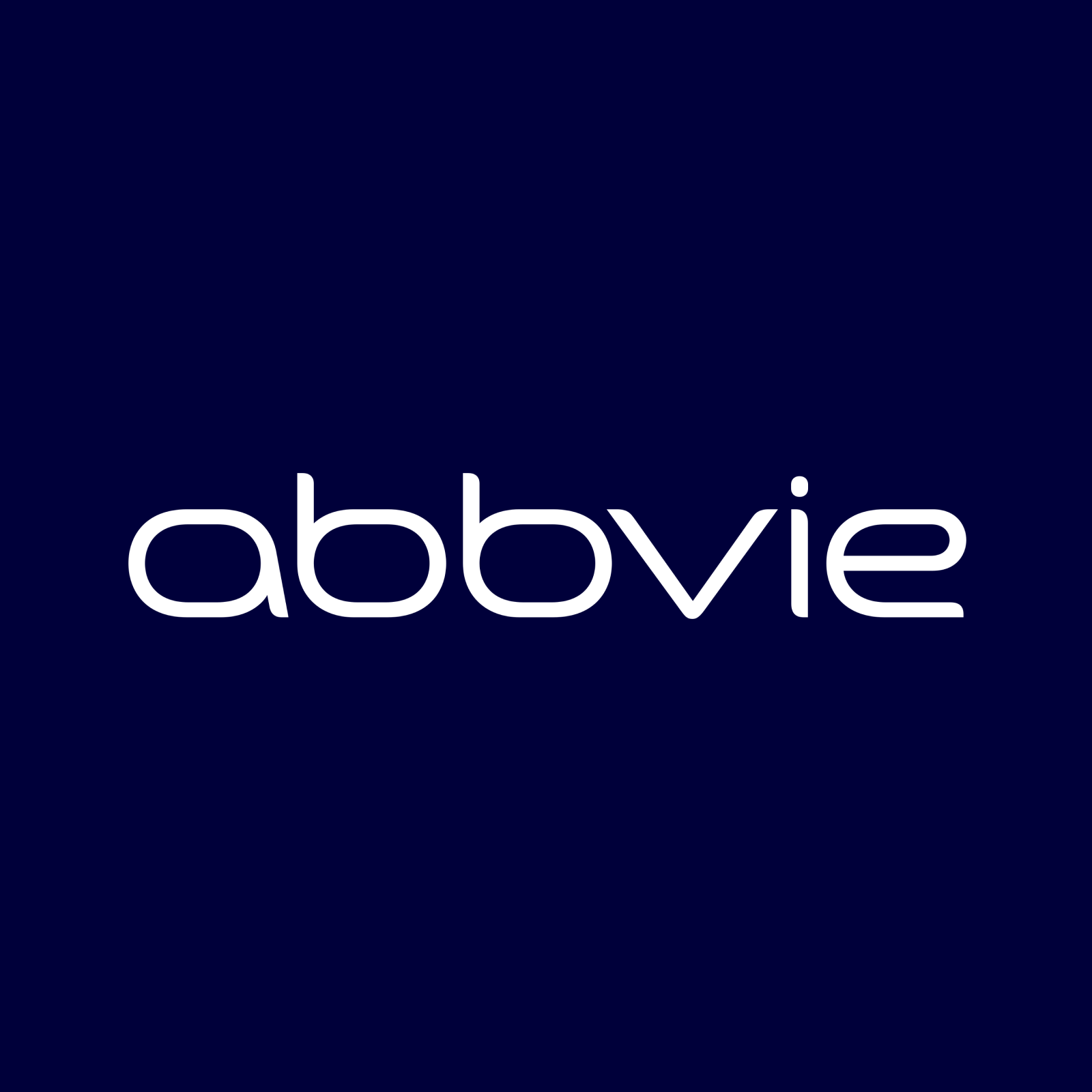
Anterix Inc
NASDAQ:ATEX

Earnings Call Analysis
 Q3-2024 Analysis
Anterix Inc
Q3-2024 Analysis
Anterix Inc
Anterix has welcomed its sixth utility customer, Tampa Electric, and has continued to garner industry-wide support for utility private broadband—a key driver of which is the measurable progress in their Demonstrated Intent scorecard. The illustration of this scorecard shows that since November, four additional utilities have exceeded the Demonstrated Intent threshold, heralding an increase of about $200 million in possible contracts. The total potential from the 18 utilities in this top tier now stands at approximately $1.1 billion.
A pivotal achievement this quarter is Anterix's inclusion of new specifications in 3GPP's Release 18, which furnishes utility companies using Anterix's 900 MHz spectrum with a seamless transition path to 5G. This ensures that their investments are future-proof. To further underline their commitment to this technology, Anterix will be participating in three significant industry events—DistribuTECH, the NARUC winter meeting, and Mobile World Congress—to bolster support for their 900 MHz private wireless broadband network and showcase the practical applications of such technologies.
Anterix understands the nuanced state-by-state regulatory framework within which utilities operate. They work closely with state utility commissions and regulatory teams to emphasize the importance of support for advanced communications systems, including private LTE networks, which can often be part of broader grid modernization initiatives.
The company has received $190 million of a total $270 million from contracts, with $80 million pending. No additional cash receipts are expected this fiscal year, but $15 million is expected in Fiscal Year 2025, followed by approximately $65 million over the subsequent three fiscal years. This structured cash flow comes from the contracts secured to date.
Anterix is gearing up to exhibit a wealth of innovative solutions developed by its Ecosystem partners at DistribuTECH, with a focus on cybersecurity, resiliency, and emerging clean energy trends. They anticipate meaningful customer interactions, similar to previous years. Additionally, while the pace of stock buybacks has somewhat slowed, the company maintains its commitment to its $250 million program, with expenditures varying based on liquidity and near-term cash inflows.















 You don't have any saved screeners yet
You don't have any saved screeners yet




Hello, and welcome to the Anterix Fiscal 2024 Third Quarter Investor Conference Call. [Operator Instructions]
I would now like to hand the call to Natasha Vecchiarelli. Please go ahead.
Thank you, and good morning, everyone. I'm Natasha Vecchiarelli, Vice President of Investor Relations & Corporate Communications, and I welcome you to the Anterix third quarter conference call.
Joining me today are Rob Schwartz, President and CEO; Ryan Gerbrandt, COO; Tim Gray, CFO; and Chris Guttman-McCabe, Chief Regulatory and Communications Officer.
Before we begin, I'd like to remind you that we will make forward-looking statements during this call regarding future events and our anticipated future performance, such as our commercial outlook and guidance. These statements are based on current expectations and assumptions that are subject to risks and uncertainties.
Investors are cautioned not to place undue reliance on forward-looking statements. Additionally, we do not undertake any duty to update any forward-looking statements.
Important factors and risks that could cause actual results to differ materially from the company's expectations are disclosed in our most recent SEC filings. These files can be accessed on our website or on the SEC's website.
After Rob provides his prepared remarks, we'll open the call for questions.
With that, I'll turn the call over to Rob.
Thanks, Natasha. Good morning, everyone, and thank you for joining us. In this latest quarter, Anterix has continued progress on our journey to making 900 megahertz utility broadband the de facto standard in creating a cleaner, safer, affordable and more secure energy future.
Since our last investor update in November, we welcomed our sixth utility customer, Tampa Electric. We achieved 3GPP standards approval, giving a clear evolutionary path to 5G for 900 megahertz spectrum users. We continued to advance industry-wide support for utility private broadband evidenced by a significant movement in our Demonstrated Intent scorecard. And we welcomed the legendary utility industry leader, Tom Kuhn, to our team as Vice Chairman of our Board.
I'll start by providing a quick update on our Demonstrated Intent scorecard, which we began sharing a year ago to measure and quantify the meaningful indicators of customer intent that we see before we get to a contract. As a reminder, the analysis behind our Demonstrated Intent scorecard includes tracking of 20 measurable indicators for each prospective customer in our pipeline, scoring each indicator based on our assessment of its relative importance and then calculating a combined Demonstrated Intent or DI score for each of these prospective customers.
As we track and score 20 individual indicators with weighted scores, it's the sum of the analysis that lets us know whether the DI threshold has been crossed, and in turn, informs our confidence level that a utility is demonstrating its intent to proceed with deploying 900 megahertz spectrum.
Of course, that does not mean that the process of moving them toward a contract is finished. Work is still needed like the work we did with Tampa Electric to move them to a contract, and therefore, out of the DI scorecard.
Even with those that have shown the highest of Demonstrated Intent, stops and starts are expected. It's the total score of the opportunity within this category and beyond that makes us confident that we'll continue to finalize contracts.
And we have seen that continued movement both for the number of utilities that have crossed the threshold and beyond. As the updated DI infographic available on our Investor Relations website shows, since our last report in November, 4 utilities have crossed the DI threshold representing approximately $200 million in additional potential contracts. In total, there are now 18 utilities in that highest category of DI, representing about $1.1 billion of potential contract proceeds.
Note that this count is net of Tampa Electric that came out of the scorecard when we entered into a contract and also reflects the removal of one small municipal utility, a single-digit deal.
Needless to say, we are working collaboratively with all 18 of this category and the dozens of other utilities in our pipeline to move them to contract.
Another significant milestone that we reached this quarter is the inclusion of new specifications in 3GPP's Release 18. Anterix's technology team was able to secure global support for our effort as we move through the standardization process.
For those less familiar, 3GPP is the global organization of wireless carriers and infrastructure vendors that has defined the evolutionary standards of LTE through 3G, 4G, 5G and beyond. The new 3GPP specification means that utilities using Anterix's 900 megahertz spectrum for private wireless networks now have a clear migration path to 5G when needed, ensuring that their investments in private networks are forward compatible.
Anterix is also advancing our efforts to build industry-wide support and scale for utility private wireless broadband networks at 900 megahertz. We continue to engage with the utility and wireless ecosystem as well as policymakers to join us, including our utility customers, in this collective action.
Later this month, we will harness 3 flagship industry events to continue to build our momentum with all of our stakeholders. Anterix's presence at the key industry trade show, DistribuTECH, will showcase dozens of real-world use cases, showing valuable applications that are available now for utilities to strengthen their grids. We will have 40 of our Active Ecosystem members co-located in our booth, demonstrating their solutions that harness the power of broadband platform we are enabling.
As we've seen from prior years, this event has resulted in broadening industry awareness of the tangible and immediate benefits of 900 megahertz private wireless broadband.
At the same time, the winter meeting of NARUC, the National Association of Regulatory Utility Commissioners, will convene utility regulators and their staffs from virtually every state in the nation to examine industry-wide challenges, including top priorities of integrating more renewable energy and addressing the growing threats of wildfires and cybersecurity. We will be actively participating in this event to further educate policymakers about the essential need for private broadband networks to support solutions for these increasing challenges.
And third, we'll have an executive presence at wireless sector's flagship event, Mobile World Congress. We will engage the global leaders driving the development and deployment of private wireless broadband networks.
Anterix is also advancing the market by supporting multiple filings to the U.S. Department of Energy for funding under the Bipartisan Infrastructure Law. One submission included a collaboration with the Southern States Energy Board and a national organization representing the rural cooperative utilities, known as co-ops. The business model represented in the filing provides a scalable shared communications platform where each regional utility can connect to improve grid resilience and deliver more affordable electricity to rural communities. This will provide a channel to extend Anterix's 900 megahertz spectrum to the co-op community addressing the 2,000-plus universe of cooperative electric providers.
Additionally, Anterix was recently invited to participate in supporting the U.S. Department of Energy's efforts to help modernize the electric grid. Anterix is joining with 4 of the DOE's National Laboratories and others to support a program entitled, The Assessment of Communications Architectures for Energy Systems. This multiparty team is investigating ways to mitigate gaps in technology standards and processes for communications across the grid. This program is designed to support an advanced future cybersecurity training and planning and provide recommendations for improved technology standards and practices for the grid.
Before I wrap up our prepared remarks, I want to highlight another indicator of strength for our movement advancing utility broadband, our Anterix team. This quarter, as a resounding sign of further industry endorsement, we proudly welcome the legendary electric power industry leader, Tom Kuhn, as Vice Chairman of our Board of Directors. Tom brings decades of energy industry experience and policy expertise to Anterix. His track record of accomplishments and honors during his more than 30 years as President and CEO of Edison Electric Institute is formidable.
Tom has built his career on leading winning coalitions that bring together utility C-suites, regulators, legislators, environmental advocates, labor leaders and other stakeholders to advance favorable public policies. From debates over deregulation decades ago to the Bipartisan Infrastructure Law and inflation Reduction Act, Tom has helped shape the industry-wide narrative and policy environment in support of the industry's vision for a resilient clean energy future.
We are honored that Tom has chosen to join us in advancing the industry-wide movement towards private wireless broadband networks at 900 megahertz.
As we have said throughout our journey, Anterix is doing more than simply providing spectrum. We are shaping a nationwide platform to support utility success in creating a secure, resilient energy future. We are in this for the long game, and we are confident in the belief that our sector-specific strategy with multi-decade relationships uniquely positions us for long-term growth and capturing additional opportunities for Anterix and our shareholders.
And with that, I'll turn it over to the operator for questions.
[Operator Instructions] Today's first question comes from Mike Crawford with B. Riley Securities.
Can you talk about what utilities that are in this highest level of Demonstrated Intent that are currently pursuing rate case? Rate cases, what their PUCs that might involve spectrum and wireless investment?
Sure, Mike. This is Rob. So the process, I think we talked about it before to investors, but just to kind of go back through it a little bit, right, so a typical utility, as we work with them, goes through a process internally building a business case, working with their internal management. And at some point, that gets rolled into a rate case. And this is a state-by-state regulated effort in which there's different rules in each state. And I say that because some have annual rate cases, others have rate cases that can be as infrequent as every 4 years or so.
And so what we've seen is utilities that either have funding that they're -- from a broader effort and they're able to move forward. Others that are wanting to roll this into a rate case to be more specific about private LTE. Rarely is it a rate case that's about private LTE, just to be clear. We've seen all kinds of grid modernization cases that are put forward that can include other communications mediums like fiber and other things, but also, more broadly, infrastructure to harden and create greater reliability within the networks of utilities.
And so this is one of those questions that it's an it-depends answer. And we've got a team of experts I mentioned in my comments about the work we're going to do at NARUC coming up, that's the annual event of all the state regulators. And through those efforts, we often have a chance to talk directly both to utility regulatory teams, but also with them to the state regulators, educating about the importance of supporting communications typically as an element of those rate cases as they go through.
And Mike, it's Chris. As Rob referenced, some of them are just logically sort of after the fact that the utility has to prove that the investment is, and the keywords are used and useful. And so clearly, as Rob referenced, differs from state to state. So some of them will enter into a broader package that may include private LTE as they are working with us. And some of us will work with us, go to conclusion, actually begin deployment and then pursue a rate case.
Okay. And then just maybe ancillary to that, are you finding much traction and success with helping utilities access some supplemental funding from the government? Like from the U.S. DOE, we got these Grid Resilience and Innovation Partnership Program, this $3.5 billion of grants that have been earmarked so far. And there's also Inflation Reduction Act money that might be available. Is that something you're seeing traction with?
Yes, Mike, thanks. I'll start that and feel free, team, to jump in. So absolutely, just to put it out more broadly, right, this is funding that is going to utilities to invest in all kinds of infrastructure, things that have impact, again, towards reliability, resiliency typically under the GRIP funding.
We're -- typically, we're not the applicant. We're actually helping utilities with the content for their applications. And we've done that in numerous cases already through multiple rounds. And so we're absolutely seeing a strong interest in that, and that's facilitating not just the funding efforts. And understand that the funding can be including private LTE, but sometimes when it funds other projects, that actually frees up funds from their capital budgets to be able to fund private LTE as well. And so we're seeing a lot of that.
Ryan, you want to add to that?
Yes, happy to. Yes, there's kind of -- I think of it, Mike, as kind of direct and indirect ways that it's influencing what we're doing. I would say our participation directly doesn't always come out quite as overtly. It's just an application for PLTE funding. You'll see a lot of this, and the intention of the DOE and the structure was really targeted at outcomes. So a specific set of use cases in a variety of different topics, of which many have inclusion of communications or broadband applications that fit underneath that.
But outside of that, a couple of things that we've seen is -- I'll actually give you one specific example, one utility that we had worked with had gone through the process and unfortunately, didn't receive the award, but the benefit of it was the initiative that they undertook drove internal alignment all the way up into the executive suite to really make the initiative and the program plan for private LTE viable. We're continuing to work with that utility here today.
The other thing we're seeing, just to highlight, that Rob lightly referenced, is part of this is just access and availability of capital. I think we've all heard across the utility ecosystem now just there are so many priorities that they have and have a finite ability and their capital plans to be able to deploy that capital that any initiative that brings capital in opens up the otherwise accessible capital for other programs to accelerate initiatives.
So we're seeing this tail-on effect even where PLTE may not have been their top priority for BIL funding, several utilities have approached us post awards with an intention to try to deploy some of that capital in different ways.
And Mike, it's Chris again. We have a team internally that works directly with utilities. And as Rob referenced earlier, we did coordinate with the Southern States Energy Board and a rural cooperative association to really drive an opportunity to move private LTE at scale into the co-op community. So we're trying to find creative ways to engage the Department of Energy and the Department of Commerce on using those funds to really modernize the grid across the country.
We also saw more than 10 utilities receive middle mile funding, so that they can deploy fiber. And in some instances, that will be part of their private LTE deployment. So they got funding for fiber elements of their private LTE department.
So we are seeing the funds. We talked, gosh, a year-plus ago about the work we did to get the language into the bipartisan legislation. We're now seeing the fruits of that effort sort of across the different tiers of the energy sector.
Okay. And then final question is we saw the $16.8 million of cash that came in from Xcel in January. Can you remind us when -- or what expected miles -- cash payment milestones we're currently expecting in the next, call it, I don't know, 14 months as well as I'm not sure if we know yet the revenue milestones on LCRA and TECO as we do for some of your prior deals from your last 10-K.
Yes, Mike, this is Tim. So we've now gotten in $190 million of the $270 million we've done in contracts. So there's $80 million more to go. We don't have any additional cash receipts scheduled from the contracts for this fiscal year, so that's through March.
We've got another roughly $15 million contracted to come in, in FY '25. And then the rest of those funds, roughly $65 million, in our fiscal years '26 through '28 to come in.
So that's the cash flow based on the contracts that we've done to date.
And on revenue recognition, we'll have more in the next 10-K that we'll be filing in May about how we chart those out specifically, but I think you'll start to see both LCRA and TECO revenue recognition within the next 12 months.
The next question comes from Alana Papa with Morgan Stanley.
I'm on for Simon Flannery today. Just a couple of quick ones for me. I know you mentioned DistribuTECH and the use cases you'll show there. Is there any sneak peek you could give us now on what you're seeing? Any updates from what you described in our last few earnings calls? And then second, I see the buyback slowed just a bit in the quarter. I know you expected it to pick up immediately. Can you maybe help us in terms of modeling out what we should expect on that side?
Absolutely, Alana. Thank you for the questions. I think we're really excited about DistribuTECH. I'm going to let Ryan take that one and then Tim will talk to you about the buyback update.
Excellent. Yes, let me give you a little bit of a sneak peek into how we're thinking about DistribuTECH. And our focus there is really to demonstrate the broad set of capabilities and the priority set of use cases and things that the Ecosystem at large is doing, and we're going to have a significant member of our Ecosystem participants there, really showcasing all the innovative solutions that they've developed as a result of having capabilities that a broadband network can bring.
But big picture, it's very consistent with how we've talked about the evolution over time, which, again, is a macro reflection of what's happening in the industry, the focus on security and cybersecurity. You may have seen the FBI's testimony just at the end of January reflecting on the potential risk associated with China and the vulnerabilities and critical infrastructure and specific utilities. That is a primary area of focus and one that will continue to evolve with time.
We're equally seeing continued evolution around resiliency and the ongoing focus somewhat related to what we're seeing in the environmental impacts and storms, wildfire mitigation. Obviously, with the disastrous events in Hawaii coming through the holiday season has brought a new focus in a positive way to how critical it is that we help bring solutions not just to be able to detect and mitigate but to proactively help provide technology solutions to stop wildfires before they start. And that's a big part of our focus with the falling conductor protection solution that we've talked about and San Diego Gas & Electric has already deployed in the field.
Clean energy, workforce mobility, those are other themes that we're continuing to see around and also the broader topic around kind of grid edge.
Smart metering that came through the early parts of the 2000s is really coming up into a replacement cycle here soon. And the concept of now what's being talked about in the industry as smart metering 2.0 is really becoming an evolving story that is really only capable because of the investments that we see now in front of us with broadband communications and the ability to do more with the connected devices, provide connectivity not just to the meter on the side of the consumer's home, but into the devices that they call behind-the-meter with renewables and residential solar and everything else that comes with it.
It's really an exploding kind of opportunity we're seeing in the Ecosystem and across the industry at large. We'll have a total of something like 40 of our Ecosystem members, just to give you an example, in our booth with us at DistribuTECH. So we'll have a big team, obviously, there present. We're anticipating a lot of direct customer interaction as we have through the last few years.
So Alana, this is Tim. On the buyback, so we spent about $8 million this last quarter and then the previous quarter was about $10.8 million. So we'll have variability quarter-to-quarter based on current liquidity, what we're expecting to spend, particularly around clearing at that time, and then looking at what the near-term cash inflows are going to be. But I would expect us to remain very active in the $250 million program that we just announced.
So we'll continue to be very active. Quarter-to-quarter, I can't say what exactly those numbers are going to be, but hopefully, we'll stay within the vicinity of where we've been in the last couple of quarters.
[Operator Instructions] Seeing no further questions, this concludes our question-and-answer session. I'd like to turn the call back to Rob Schwartz for any closing remarks.
Thanks, MJ. Thanks, everyone, for your participation this morning. As you heard, we're really excited about the progress we made this quarter, and we remain laser-focused on advancing and completing our contracts towards our mission of becoming the de facto provider of wireless broadband in our nation's utilities.
Look forward to sharing more with you all soon, and look forward to our next call. Thank you very much.
The conference has now concluded. Thank you for your participation. You may now disconnect your lines.